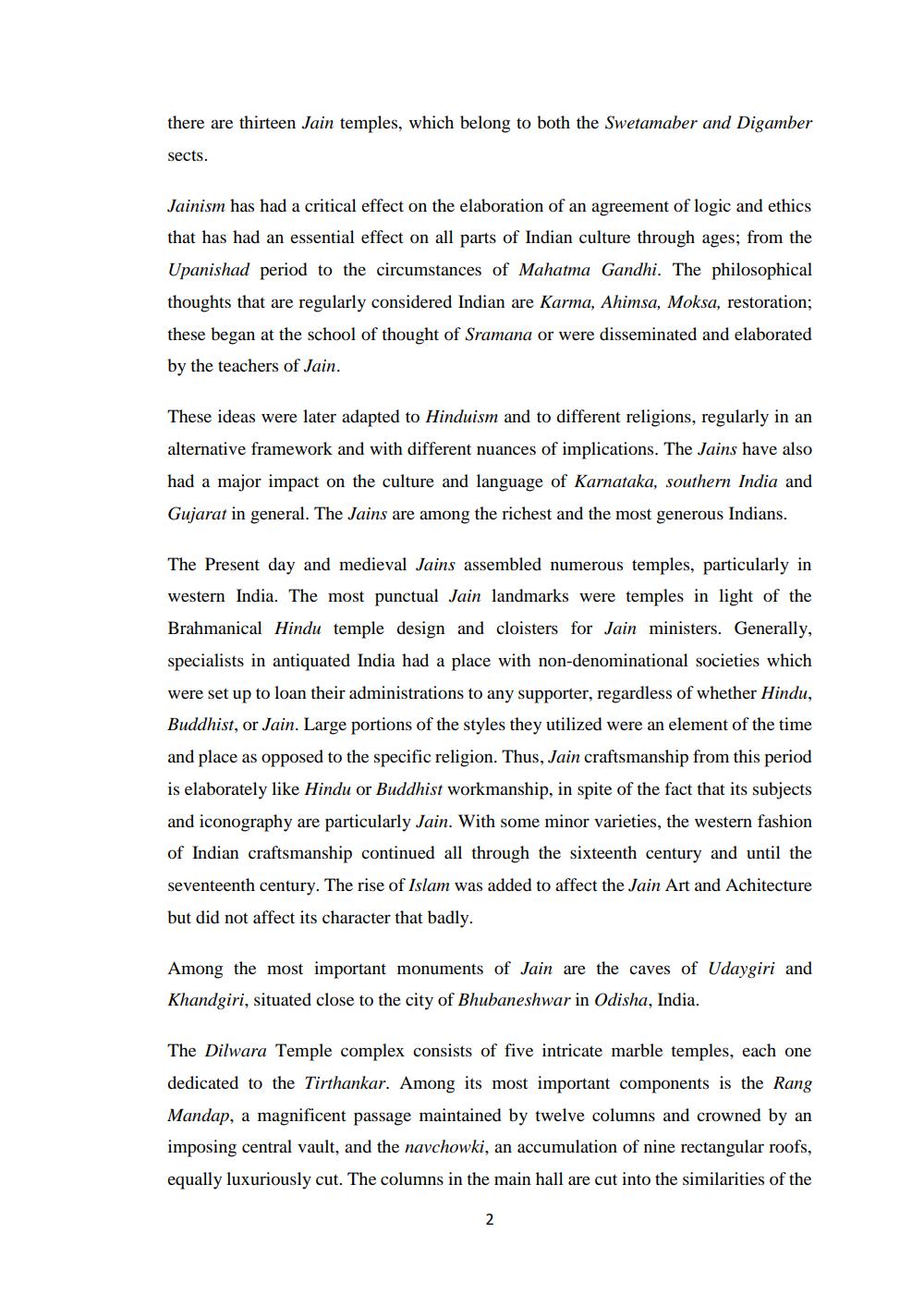________________
there are thirteen Jain temples, which belong to both the Swetamaber and Digamber sects.
Jainism has had a critical effect on the elaboration of an agreement of logic and ethics that has had an essential effect on all parts of Indian culture through ages; from the Upanishad period to the circumstances of Mahatma Gandhi. The philosophical thoughts that are regularly considered Indian are Karma, Ahimsa, Moksa, restoration; these began at the school of thought of Sramana or were disseminated and elaborated by the teachers of Jain.
These ideas were later adapted to Hinduism and to different religions, regularly in an alternative framework and with different nuances of implications. The Jains have also had a major impact on the culture and language of Karnataka, southern India and Gujarat in general. The Jains are among the richest and the most generous Indians.
The Present day and medieval Jains assembled numerous temples, particularly in western India. The most punctual Jain landmarks were temples in light of the Brahmanical Hindu temple design and cloisters for Jain ministers. Generally, specialists in antiquated India had a place with non-denominational societies which were set up to loan their administrations to any supporter, regardless of whether Hindu, Buddhist, or Jain. Large portions of the styles they utilized were an element of the time and place as opposed to the specific religion. Thus, Jain craftsmanship from this period is elaborately like Hindu or Buddhist workmanship, in spite of the fact that its subjects and iconography are particularly Jain. With some minor varieties, the western fashion of Indian craftsmanship continued all through the sixteenth century and until the seventeenth century. The rise of Islam was added to affect the Jain Art and Achitecture but did not affect its character that badly.
Among the most important monuments of Jain are the caves of Udaygiri and Khandgiri, situated close to the city of Bhubaneshwar in Odisha, India.
The Dilwara Temple complex consists of five intricate marble temples, each one dedicated to the Tirthankar. Among its most important components is the Rang Mandap, a magnificent passage maintained by twelve columns and crowned by an imposing central vault, and the navchowki, an accumulation of nine rectangular roofs, equally luxuriously cut. The columns in the main hall are cut into the similarities of the
2




